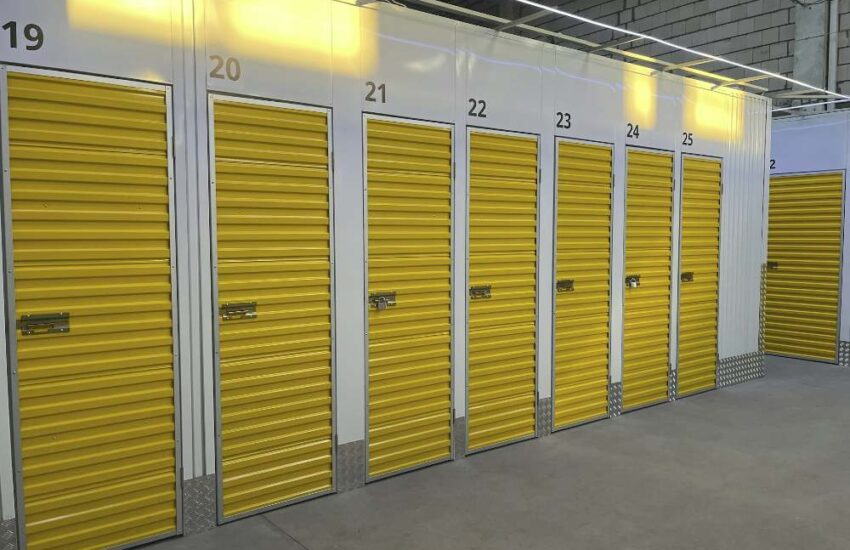Comprehensive Guide to Professional Security Services
In an increasingly risky world, corporations and private citizens seek the peace of mind that professional security protection provides against harm, loss, and liability across people, assets, and information systems. As threats and vulnerabilities evolve, security companies continually update protocols through ongoing guard training, the adoption of breakthrough technologies, and ever-expanding service capabilities customized to unique needs.

Roles of Security Personnel
Myriad service models exist within the security sector, spanning reactive responses like first responders to proactive prevention measures for corporate spies. Core specializations include:
Armed Guards: Licensed to carry firearms for dissuasion and response during escalated threats of violence like raids or attacks. Protecting high-risk locations like banks, data centers, or research labs with sensitive intellectual property is ideal. Extensive training minimizes risky liability and negligence.
Unarmed Guards: Deter incidents through visibility and rapid nonviolent intervention, signaling authorities if conflicts persist. Suitable for public-facing venues like malls, museums, or office towers. Focus on patron safety and boost public relations.
Bouncers: Screen guest lists and enforce code of conduct policies at entertainment venues like nightclubs, sports stadiums, and music festivals by mitigating fights through early ejections if rules are broken. Physically imposing to prevent unruly behavior, often with military or law enforcement backgrounds. Help curb underage drinking, weapons, and harassment complaints.
Loss Prevention: Blend into retail settings discreetly identifying shoplifters or employee theft through surveillance technology monitoring, including unseen embedded alarm tags on goods. Apprehend and report offenders legally while securing evidence for authorities.
Corporate Espionage Investigators: Conduct undercover infiltration unearthing fraud, intellectual property theft, embezzlement, or misconduct with recorded proof to build legal cases prioritized in high-stakes industries like manufacturing or software. Help plug leaked insider data.
Security Consultants: Survey existing infrastructure vulnerabilities, then engineer customized solutions spanning staff, gear, and protocols to harden protective perimeters around executives, assets, and sensitive systems. Provide ongoing guidance optimizing follow-up enhancement.
First Responders: Rapidly mobilize emergency manpower, resources, and strategic support during catastrophic events, both natural and human-caused, until additional help arrives for triage assistance. Deducting public services during floods, fires, or terror incidents through supplemental capacity.
While individual roles concentrate on unique capabilities, comprehensive teams integrate overlapping strengths across areas like corporate campuses, hotels, hospitals, and transportation hubs, demanding extensive, multifaceted coordination.
Core Security Services
Both physical and operational security scopes continue expanding as threats multiply across the modern world. Fortunately, security teams offer full suites of both established and emerging protective services:
Access Control: Manage authorized individual movements by securing ingress/egress points. Methods include ID badge protocols, biometrics like fingerprint or retina scans, passwords, multi-factor authentication, or stay/no stay list screening against known risks—essential regulating access.
Risk Assessments & Audits: Identify organizational vulnerabilities through exhaustive infrastructure analysis review and simulation of policy/tech barriers, determining required safeguards: customized reports & ongoing consulting remedy gaps. Test resilience against hypotheticals.
Guard Patrols: Scheduled hourly walkthroughs across property perimeters by alert professionals to monitor for suspicious activity and safety hazards for incident de-escalation or authority notification. Consistent visible presence deters illegal actions like trespassing or graffiti.
Alarm & Video Monitoring: Central networked command centers keep an eye on camera feeds, sensors, and access logs around the clock through remote viewing, detecting abnormal unauthorized activities to dispatch responsive intervention teams immediately. AI analytics identify insights.
Emergency Alert Systems: organization-wide networked duress buttons, pull stations, and panic mobile app reporting instantly mobilize support to distressed staff or distressed facility locations during altercations or accidents. Rapid awareness response is critical.
Threat Intelligence Monitoring: Ongoing harvest of actionable cyber data from the dark web uncovers emerging relevant attack plots, leaks, and scheming targeting institutions for proactive cybersecurity defense fortification before infiltration—Hardens data security.
Due Diligence Background Checks: Deep screening of candidate employees, partners, investors, and acquisitions surface hidden red flags from criminal histories to bankruptcy indications through extensive record searches aid hiring/onboarding risk reduction against plant risks.
Workplace Violence Preparedness: Comprehensive programs establishing emergency response protocols prepare for worst-case active shooter events or assaults through escape route planning, panic room shelters, and medical trauma response training, minimizing casualties.
Selecting an Optimal Security Partner
Many guard companies, both national franchises and local independents, like this security company based in Memphis, seek contracts but possess vastly differing competencies and specializations. Choosing correctly ensures aligned services, securing unique site priorities and occupants rather than vague blanket protection. Consider these decisive factors:
Industry Specialization: Match highly focused teams steeped in mastering security intricacies of your specific sector, like healthcare, financial services, or critical infrastructure, instead of generalists spread thin across assignments and tailored precision solutions.
Screening Rigor: Upstanding guards prove critical, so scrutinize onboarding protocols over merely passing minimal statewide criteria. Look for in-depth multi-point background checks, drug tests, and reference validation. Deep recurring verification is essential.
Training Programs: Ongoing learning expands response capabilities, so demand details on instruction hours encompassing the latest protocols in crisis management, cybersecurity, emergency medicine, and conflict resolution. Ask for public documentation.
Communication Infrastructure: Crucial coordination across expansive facilities requires reliable connectivity and reporting software, so assess command center sophistication, redundancy assurance, and alarm/alert transmission hardening. Test uptime reliability.
Cultural Alignment: Guard discretion, compassion, and judgment radically alter outcomes, so seek morally aligned partners sharing organizational values through established community ties. Avoid mismatched worldviews.
Reputation Credibility: While slick marketing excites, depth comes from objective assessments, so verify exemplary inspection ratings, safety certifications like Secure America, and client retention levels. Check public service backgrounds like veteran-owned security companies exhibiting proven multi-situation leadership excellence.
By aligning distinguished security experts steeped in your specific risk landscape and priorities rather than randomly selecting minimally viable options, comprehensive protection gives stakeholders peace of mind from proactively confronted threats across ever-evolving premises, assets, and systems through tailored multilayered defense.
Ongoing Advances Securing Tomorrow
As technology and global risks accelerate, security provision evolves in tandem, expanding new delivery mechanisms protecting people and organizations tomorrow through cutting-edge offerings:
Predictive Risk Analytics: Harness big data pattern identification to expose extraordinary early warning signs of brewing threats like network intrusion upswings, insider abuse indications, or looming violence, allowing unprecedented lead time and strengthening barriers in advance.
Automated Video Surveillance: Next-generation AI-monitored networks sense concealed packages, suspicious actions, dangerous movements, and weapons, vastly multiplying vigilance through limitless cameras and providing comprehensive spatial and forensic oversight anywhere.
Smart Tracking Beacons: Bluetooth and cellular-enabled markers secured to valued assets transmit locations, allowing instant remote lockdown, stopping thieves from stealing equipment, devices, or vehicles mid-theft through geo-fencing immobilization.
Virtual Guards & Drones: Augmented mobile rover patrols Beam live agent embodiment into autonomous machines surveying sites without fatigue, distraction, or sickness. In contrast, sophisticated drones surveil from the skies, recognizing faces and anomalies.
Always Connected Wearables: Stubborn lone worker safety risks get affordably solved through connected smart badges monitoring staff location/health alerts during remote site work or home healthcare visits so no employee ever stays stranded again.
Nanotech Sensor Skins: Nearly invisible customizable films applied onto valued equipment or fixtures detect minute infractions like vibration, temperate changes, and chemical residue, triggering alerts to attempts of disturbance, tampering, or removal.
See Through Wall Radar: Portable units remotely scan interior spaces, identifying precise locations of people and objects through walls, aiding tactical planning before risky building entries, and letting teams act smarter when entering the unknown.
By continually using a reliable security company that integrates breakthrough capabilities, modern security minimizes emerging risks, allows institutions, infrastructure, and individuals to stay steps ahead of tomorrow’s challenges.


